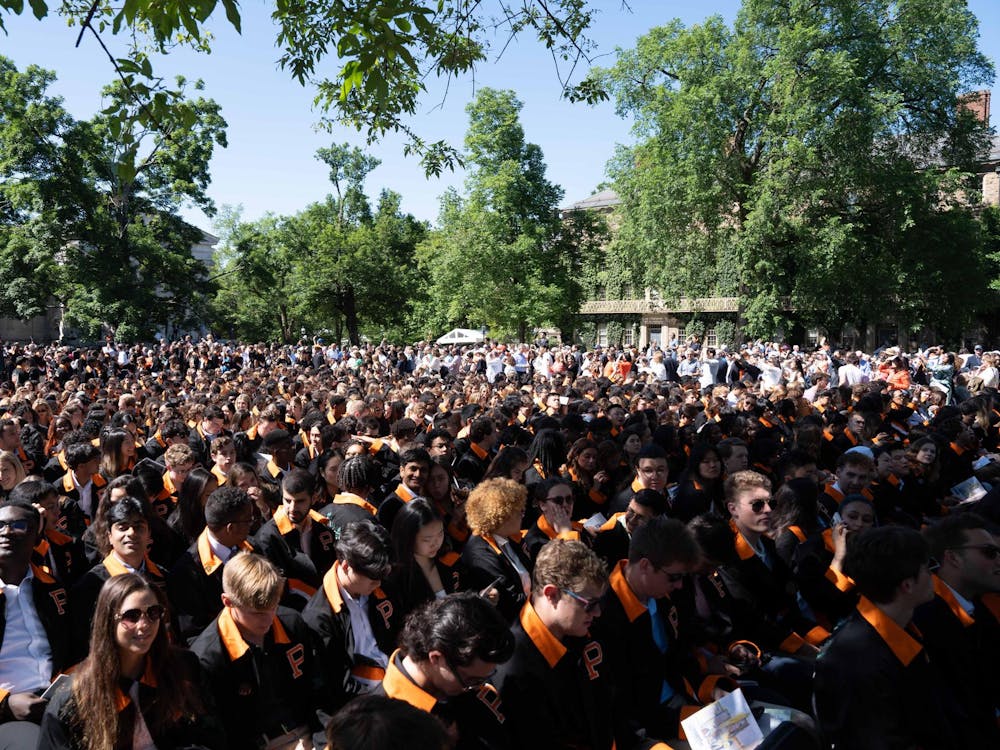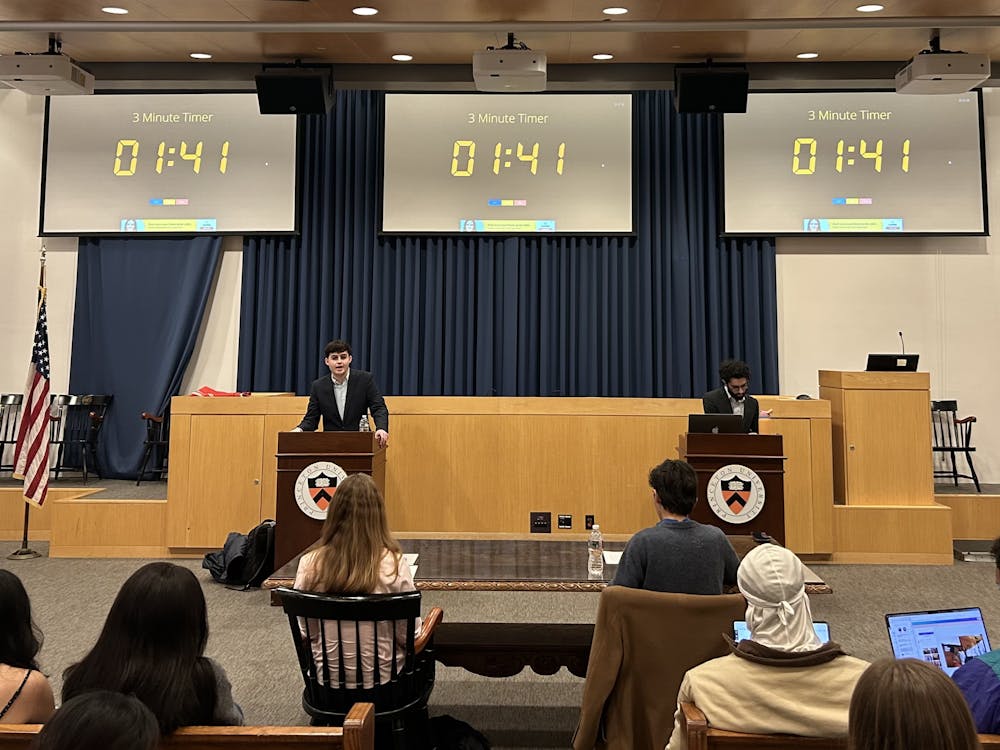So the old guard is changing, as the Opinion Board rightly pointed out on Friday. But does that have to mean it is exiting the golden gates of Princeton? No. The heroes of Princetondom, the professorial and presidential legends, are here to stay.
I have realized that after that certain genus of legendary Princeton faculty members have made their indelible mark on Princeton academia and character, their essence, whether in person or in name, never leaves.
After my last precept with the great Shakespearean T.P. Roche, I asked him if he would be around next year, or if he is leaving us. He jovially told me that he would certainly still be around, that he'll be spending time in a Firestone office, and that he's not going anywhere. I was elated. This man, who has taught in this institution for 42 years, was not going to disappear along with his experiential attire of the classic vintage days of Princeton. Legends like he, who have taught for so many years, are our only personal ties to a firsthand account of the evolution of Princeton tradition and culture. Professor Roche, for instance, has witnessed the first admittances of women and the vast physical expansion of the university.
Princeton legends in general, luckily, do not leave us. They usually quietly live out their retirement in the quaint town of Princeton, a place which has become all too familiar for them to simply relinquish in favor of the usual Florida retirement relocation plan. Last spring, my friend and I walked passed another legend whose real home will always be in Princeton. This well-seasoned man walked with a dazed gait, a folded umbrella gently swinging from his right hand. He, of course, was "The Great John Nash," someone who was one of Princeton's finest students ever to grace her province. Although it has been over 50 years since he was a surging graduate student here, and although he moved around a lot after his studies, he, like many other Princeton legends, was ultimately drawn back to the University and occupies a Fine Hall office today.
We, as nostalgic students, need not fear abandonment from Princeton legends. The Roches and the Nashes are people who do not lose interest in their subjects. What Shakespeare is for Roche, is what math is for Nash — that is, their subjects are like children to them, and where else best to continue to nurture them than in the very environs that gave birth their maturity.
Even when murky death meets the fate of retired Princeton legends, they are still amongst us. For instance, on Thursday, April 24, services were held in the University Chapel in memory of John Keaney, an esteemed Greek and Latin scholar who taught in Princeton's classics department for 41 years. The mourning services' being held in the University Chapel says something very powerful about the University as a place to which these legends are so closely attached, even in death.
Nor can the passage of centuries wither the staying presence of the true Princeton legend. Once-University President and Professor of Theology, John Witherspoon, is still with us on the apex of this campus, near East Pine, though slightly larger and sturdier than his colleagues probably remember him. A widely used nearby street, of course, is another symbol of his continued stay with the University.
The spirit of another former Princeton legend also permeates this campus. All I need say is that a residential college bears his name, as does a distinguished academic program, and, of course, a running fountain. People are always passing his name around, usually in the form of an alliterative nickname which shares the same alliteration of his true name. This, of course, is aside from the actual continuance of his academic contribution to the field of politics.

So whether through Princeton colloquialisms such as "Woody-Woo," symbols such as the Witherspoon statue or actual continued personal presence such as that of Nash and Roche, the Princeton legend never exits the Princeton stage.
Perhaps, though, it was my Shakespeare precept's visit to the University Chapel which convinced me most that the true Princeton legend never leaves us. As T.P. Roche was ending our private little guided tour of the Chapel's stained-glass windows, each one bearing its own story, he pointed us towards the Window of the Law, which is located high up in the south clerestory near the entrance of the chapel. There, amongst other legends of the law, was none other than James Madison, glimmering with a colorful celestial light that only a stain glass window can emit — a light that made it obvious that Madison was still most alive and vibrant in Princeton. All I could say to myself in light of this still-vibrant Madison was, "T.P., you too will never completely leave us, for your 42 years here have, like the service of Madison, made an indelible mark in the sacred tablet of Princetonia."
Steven Kamara is a politics major from Manhasset Hills, NY.








